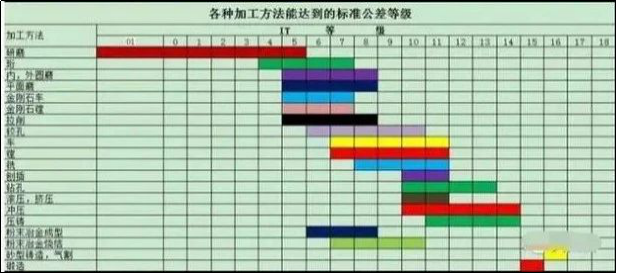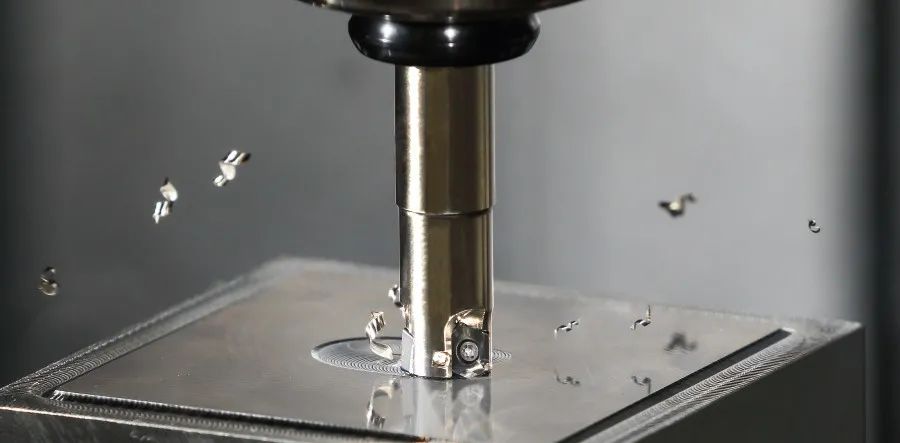Turning, milling, planing, grinding, drilling, boring, the highest accuracy of these machine tools and the tolerance levels that various processing methods can achieve are all here.
Turning
The cutting process in which the workpiece rotates and the turning tool moves in a straight line or curve in the plane. Turning is generally carried out on a lathe, which is used to process the internal and external cylindrical surfaces, end faces, conical surfaces, forming surfaces and threads of workpieces.
The turning accuracy is generally IT8-IT7, and the surface roughness is 1.6~0.8 μ m。
1) The rough turning shall adopt large cutting depth and large feed rate to improve the turning efficiency without reducing the cutting speed, but the machining accuracy can only reach IT11 and the surface roughness is R α 20~10 μ m。
2) High speed and small feed rate and cutting depth shall be adopted as far as possible for semi finish turning and finish turning. The machining accuracy can reach IT10~IT7, and the surface roughness is R α 10~0.16 μ m。
3) High speed precision turning of nonferrous metal parts with diamond turning tool finely polished on high-precision lathe can make the machining accuracy reach IT7~IT5, and the surface roughness is R α 0.04~0.01 μ m. This kind of turning is called "mirror turning".
Milling
Milling refers to the use of rotating multi edge tools to cut workpieces, which is a highly efficient processing method. It is suitable for machining plane, groove, various forming surfaces (such as spline, gear and thread) and special surface of die. According to the same or opposite direction of the main movement speed and the workpiece feed direction during milling, it can be divided into forward milling and reverse milling.
The machining accuracy of milling can generally reach IT8~IT7, and the surface roughness is 6.3~1.6 μ m。
1) The machining accuracy during rough milling is IT11~IT13, and the surface roughness is 5~20 μ m。
2) Machining accuracy IT8~IT11 and surface roughness 2.5~10 in semi precision milling μ m。
3) The machining accuracy during precision milling is IT16~IT8, and the surface roughness is 0.63~5 μ m。
Planing
Planing is a cutting method that uses a planer to make horizontal relative linear reciprocating motion on the workpiece, which is mainly used for the contour processing of parts.
The machining accuracy of planing can generally reach IT9~IT7, and the surface roughness is Ra6.3~1.6 μ m。
1) Roughing machining accuracy can reach IT12~IT11, and surface roughness is 25~12.5 μ m。
2) The semi finishing machining accuracy can reach IT10~IT9, and the surface roughness is 6.2~3.2 μ m。
3) The precision of finish planing can reach IT8~IT7, and the surface roughness is 3.2~1.6 μ m。
Grinding
Grinding refers to the processing method of removing excess materials from the workpiece with abrasive and abrasive tools. It belongs to finishing and is widely used in the machinery manufacturing industry.
Grinding is usually used for semi finishing and finishing, with the accuracy of IT8~IT5 or even higher, and the surface roughness is generally 1.25~0.16 μ m。
1) The surface roughness of precision grinding is 0.16~0.04 μ m。
2) Ultra precision grinding surface roughness is 0.04-0.01 μ m。
3) The surface roughness of mirror grinding can reach 0.01 μ M below.
Drilling
Drilling is a basic method of hole processing. Drilling is often carried out on drilling machines and lathes, or on boring machines or milling machines.
The machining accuracy of drilling is relatively low, generally reaching IT10, and the surface roughness is generally 12.5~6.3 μ m. After drilling, reaming and reaming are often used for semi finishing and finishing.
Boring
Boring is a kind of inner diameter cutting process that uses a tool to enlarge a hole or other circular contour. Its application range is generally from semi rough machining to finishing. The tool used is usually a single edge boring tool (called boring bar).
1) The boring accuracy of steel materials can generally reach IT9~IT7, and the surface roughness is 2.5~0.16 μ m。
2) The machining accuracy of precision boring can reach IT7~IT6, and the surface roughness is 0.63~0.08 μ m。
Note: High precision Machining is mainly used to characterize the fineness of products, and is a term used to evaluate the geometric parameters of machined surfaces. The standard for measuring machining accuracy is tolerance grade. There are 20 standards from IT01, IT0, IT1, IT2, IT3 to IT18, among which IT01 represents the highest machining accuracy of the part, IT18 represents the lowest machining accuracy of the part. General mining machinery belongs to IT7, and general agricultural machinery belongs to IT8. According to the different functions of product parts, the machining precision required to be achieved is different, and the processing form and process selected are also different.
Post time: Nov-07-2022



